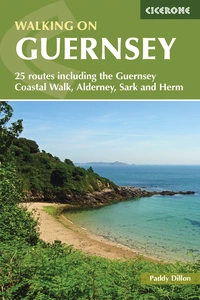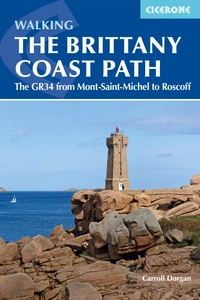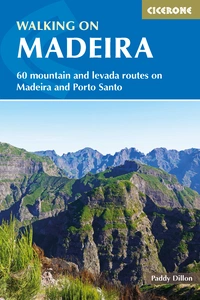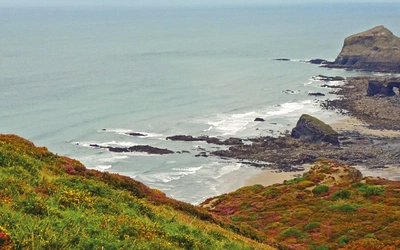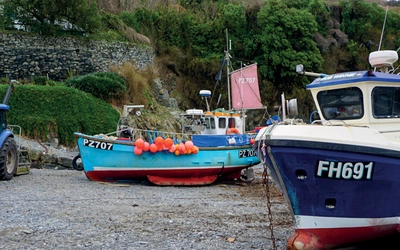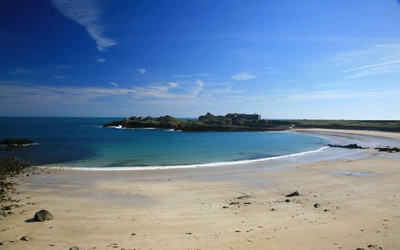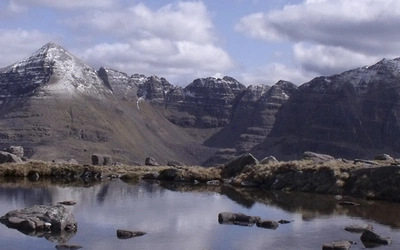Walking on Jersey: everything you need to know
Victor Hugo charmingly referred to the Channel Islands and ‘Pieces of France fallen into the sea and picked up by England.’ Paddy Dillon, only slightly less charmingly, calls them 'beautiful and abounding in interest.' In an extract from his guidebook to Walking on Jersey, Paddy Dillon introduces us to this beautiful 'peculiarity of the Crown' and gives us all the information on how to get to Jersey, as well as information on the language, currency and wildlife of the island.
Walking on Jersey
24 routes and the Jersey Coastal Walk
£14.95
Guidebook describing 24 day walks on Jersey in the Channel Isles. Parts of many routes can be combined to make longer ones, including the 48 mile Jersey Coastal Walk and part of the Channel Islands Way. Walks are between 3 and 8 miles, mainly on good paths and tracks, although occasionally rugged cliff paths explore the beautiful coastline.
More informationWalkers will find magnificent cliff and coastal paths, golden sandy beaches, wooded valleys and quiet country lanes. Flowers will be noticed everywhere and there is a rich birdlife. There are castles, churches, ancient monuments and fortifications to visit, as well as a host of other attractions. There are efficient and frequent bus services, and easy onward links by air and sea between the islands. This guidebook describes 24 one-day walking routes on Jersey, covering a total distance around 225km (140 miles), plus a long-distance coastal walk around the island, measuring almost 80km (50 miles). There is also a note about the Channel Island Way, a long-distance island-hopping route embracing the entire archipelago, covering 178km (110 miles).

Where is Jersey?
The Channel Islands lie south of Britain, but not everyone immediately appreciates how close they are to France. The islands fit snugly into a box bounded by lines of longitude 2˚W and 3˚W, and lines of latitude 49˚N and 50˚N. This puts them well and truly in the Golfe de St Malo off the Normandy coast of France. Jersey is the largest and southernmost of the islands, yet it has an area of only 116km² (45 square miles). No point on the island is more than 3.5km (2 miles) from the sea, yet it can take weeks to explore the place thoroughly.
When is the best time to go walking on Jersey?
Jersey is suitable as a year-round destination and generally enjoys slightly milder weather than the south of England, but the weather is still highly variable and impossible to forecast accurately. Winters are mild, but there may be frosts and, very occasionally, snow. Very bad weather at any time of year can upset ferry schedules, while fog affects flights. The peak summer period can be very hot and busy, which may not suit those looking for peace and quiet. The shoulder seasons, spring and autumn, are generally ideal for walking, with bright, clear days and temperatures that are neither too high nor too low.
Getting to Jersey
A map of transport routes makes Jersey look like the centre of the universe, with ferries and flights converging on the island from all points of the compass. Please note that there are seasonal variations, with more service the summer months than in the winter. Flights to Jersey operate from about two dozen British airports, and from a handful of European countries, such as Ireland, France, Germany, Netherlands and Switzerland. Scheduled and charter flights are available
Do you need a visa?
People who hold British or European Union passports or identity cards do not need visas to visit Jersey. All air travellers must produce some form of photo-ID or they may be denied boarding. People who have obtained a visa to visit Britain can also visit Jersey during the period for which their visa is valid.
What language is spoken on Jersey?
For centuries the language commonly spoken around the Channel Islands was a Norman-French ‘patois’ which had distinct forms from island to island. The Jersey form is known as Jèrriais, and while it is rarely heard, it is still spoken and many people are keen to preserve it. Sometimes it is referred to as ‘Jersey French’, but a French person would struggle to understand it. Visiting walkers may hear nothing of the language, but will be very aware of the roots of the language preserved in place-names all over the island. Some modern signs are bilingual, in English and Jèrriais. In all other respects, English is spoken, written and understood everywhere.
History and Governance
The Channel Islands are a quirky little archipelago, with startling divisions among themselves. They are neither colonies nor dependencies. They are not part of the United Kingdom or the European Union. They have been described as ‘Peculiars of the Crown’ meaning that they are practically the property of the Crown, and they owe their allegiance to the Crown, and not to Parliament. The self-governing ‘Bailiwicks’ of Jersey and Guernsey owe their allegiance to the Crown and seem outwardly British, but are in fact an ancient remnant of the Duchy of Normandy, with Norman–French place-names very much in evidence. For British visitors it is like being at home and abroad at the same time. French visitors, however, find it a quintessentially British experience!
Money
The States of Jersey issue their own banknotes and coins, which are inextricably linked to Sterling and come in exactly the same denominations. Bank of England Sterling notes and coins can be spent in Jersey, and currency issued by the States of Guernsey is also accepted. In theory, Sterling banknotes from Scotland and Northern Ireland are accepted, but this depends on whether the person to whom you are offering them is familiar with them. Some businesses will accept Euros, but the rate of exchange may be poor. Remember that Jersey currency is not legal tender in Britain, though British banks will change notes at face value.
Wildlife
The Channel Islands are noted for their flowers, and it is possible to find wild flowers in bloom at any time of the year. The southerly, maritime disposition of the islands and their range of habitats, from fertile soil to barren rocks, ensure that a wide variety of species can thrive. The sand dunes of Les Quennevais support around 400 species, and even an old cemetery in the heart of St Helier is graced with 100 species. Bear in mind that the sea is also a bountiful source of marine plants. Add to this the plants that are cultivated in greenhouses and gardens: there are 60 varieties of roses in the Howard Davies Park, and orchids from around the world bloom at the Eric Young Orchid Centre. The study of Jersey’s floral tributes becomes a vast undertaking!
The birdlife is amazingly rich, with a range of residents and a host of migratory species. While the landmass is rather small to support many raptors, there are owls, kestrels and sparrowhawks. The coastal margins abound in interest, attracting a range of waders which probe the beaches and rock pools for food. The cliffs and pebbly beaches provide safe nesting places for a variety of gulls and terns, and puffins can be seen on some of the smaller islands and stacks. There are areas of heathland where the rare Dartford warbler might be seen or heard, and there are a few areas of dense woodland, marsh and grassland sites which attract particular species. The range of bird habitats is under pressure from human development and recreation on such tiny islands but, even so, there is plenty to see.
Protected Areas
There is no national park on Jersey, though for many years the species-rich sand dunes of Les Blanches Banques near Les Quennevais have been regarded as a ‘special’ area, even referred to as a ‘trainee national park’. There are several small nature reserves on Jersey, from marshland to woodland. The National Trust for Jersey has already been mentioned, owning 1.6% of the land area of Jersey, which they are dedicated to preserving. There are also large and very important marine reserves, some of which are particularly difficult to access. They include the south-east coast and the rocky reefs of Les Ecrehous, Les Minquiers, Les Pierres de Lecq and Les Dirouilles.
So, why not go Walking on Jersey? It truly is an intriguing destination with lots to interest walkers.
Paddy Dillon's guidebooks to Walking on Jersey and Walking on Guernsey are published by Cicerone Press.
Walking on Jersey
24 routes and the Jersey Coastal Walk
£14.95
Guidebook describing 24 day walks on Jersey in the Channel Isles. Parts of many routes can be combined to make longer ones, including the 48 mile Jersey Coastal Walk and part of the Channel Islands Way. Walks are between 3 and 8 miles, mainly on good paths and tracks, although occasionally rugged cliff paths explore the beautiful coastline.
More information


